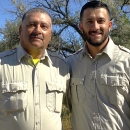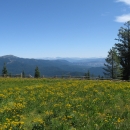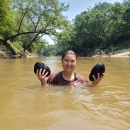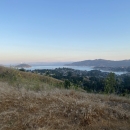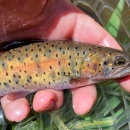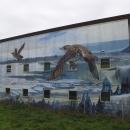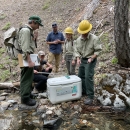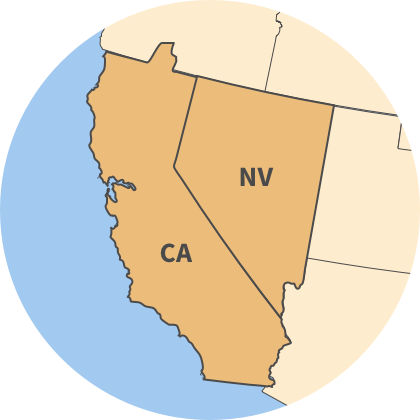
Overview of the Region
The U.S. Fish and Wildlife Service Region 8 is headquartered in Sacramento, California, and has federal fish and wildlife management responsibilities in California, Nevada, and the Klamath Basin in southern Oregon. The Region includes one of the most ecologically diverse areas in the United States, ranging from the arid sand dunes in the Mojave Desert to the snow-capped crags in the high Sierras; from rich farmland in the Central Valley to rain-soaked redwood forests along the Pacific coast. This highly diverse geography provides habitats for a vast array of wildlife. More than 42 million people live within the Region, and expanding population centers such as San Francisco Bay Area, Los Angeles, Reno, San Diego, and Las Vegas are increasing demands on natural resources, presenting unique challenges to the Region’s conservation mission.
The Service is responsible for managing the National Wildlife Refuge System, operating fish hatcheries and fishery resource offices, enforcing federal wildlife laws, managing migratory bird populations, conserving and restoring habitats, and overseeing a federal aid program that distributes hundreds of millions of dollars to state, fish and wildlife agencies.
Regional and Field Offices
Our Pacific Southwest Regional Office is in Sacramento, California. Our region consists of 11 fish and wildlife offices; Arcata, Carlsbad, Klamath Falls, Lodi, San Francisco Bay-Delta, Red Bluff, Reno, Southern Nevada, Sacramento, Ventura and Yreka, 130 Federally-recognized Native American Tribes, 45 national wildlife refuges, 5 wildlife management areas, four national fish hatcheries; Coleman, Klamath Falls, Lahontan and Livingston Stone, and the California-Nevada Fish Health Center.



